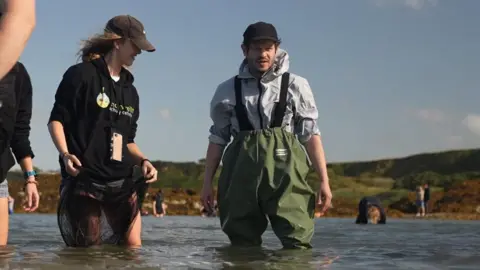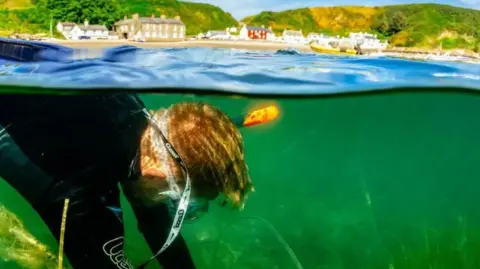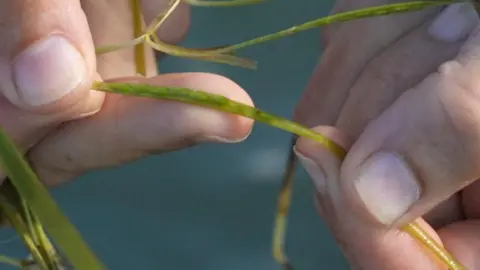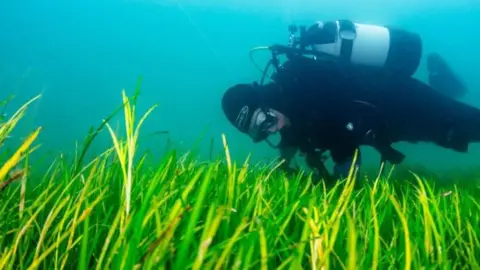Game of Thrones star helping grow seagrass meadows
 BBC
BBCGame of Thrones star Iwan Rheon has been leading the UK's biggest underwater habitat restoration project off the north Wales coast.
More than 1.5 million seagrass seeds have been harvested from the sea around the Llyn Peninsula.
They will be used to plant new underwater meadows elsewhere in Gwynedd and Anglesey which can support thousands of fish and other sea creatures.
Conservationists say seagrass can also help reduce the amount of carbon dioxide in the atmosphere and offset the effects of climate change.
Among the volunteers in waders and snorkels this week has been the Welsh actor and musician Rheon, from Carmarthen, known for playing Ramsay Bolton in Game of Thrones.
The actor, who is also an ambassador for the project, said: "Harvesting seagrass seeds isn’t as easy as you’d think.
"You’re bending over while wading in shallow water and you’ve got to feel around for the seeds – it gets murky quite quickly so you’ve got to wait for the silt to settle.
"Then when you find some little bumps on a blade of seagrass, you have to bring them out without damaging the root of the plant.
"Huge respect and thanks are due to the staff and volunteers who’ve managed to collect one-and-a-half million of these seeds over the last few days."
 Lewis Jefferies/WWF
Lewis Jefferies/WWFOver the past century, 90% of the UK's seagrass has been lost because of water pollution, coastal development and damage from swinging chain moorings.
This week, teams of people have been wading into the shallow water at one of the largest surviving seagrass meadows at Porthdinllaen near Nefyn to collect seeds.
They will be taken to a laboratory in Bridgend for processing, then planted near Pwllheli and off the coast of Anglesey, where new seagrass meadows are being grown.

The project began in 2022 and is being managed by the World Wildlife Fund (WWF) in partnership with a charity called Project Seagrass, as well as Swansea University and North Wales Wildlife Trust.
Penny Nelson from WWF said: "Seagrass is such an amazing plant – it sucks carbon out of the atmosphere and locks it into the seabed for hundreds of years.
"A single hectare of seagrass can support up to 80,000 fish and 100 million invertebrates.
"And it helps to stabilise the sediment, protecting the coast from storm surges."
 Lewis Jefferies/WWF
Lewis Jefferies/WWFDr Richard Unsworth from Project Seagrass added: "It's a habitat which teems with life – an underwater meadow which provides a structure for things to live in.
"Projects like this are proving it’s possible to bring it back, but to make a difference to the climate, we need to do it at a larger scale.
"We are now working on technology to make it easier to do that."
